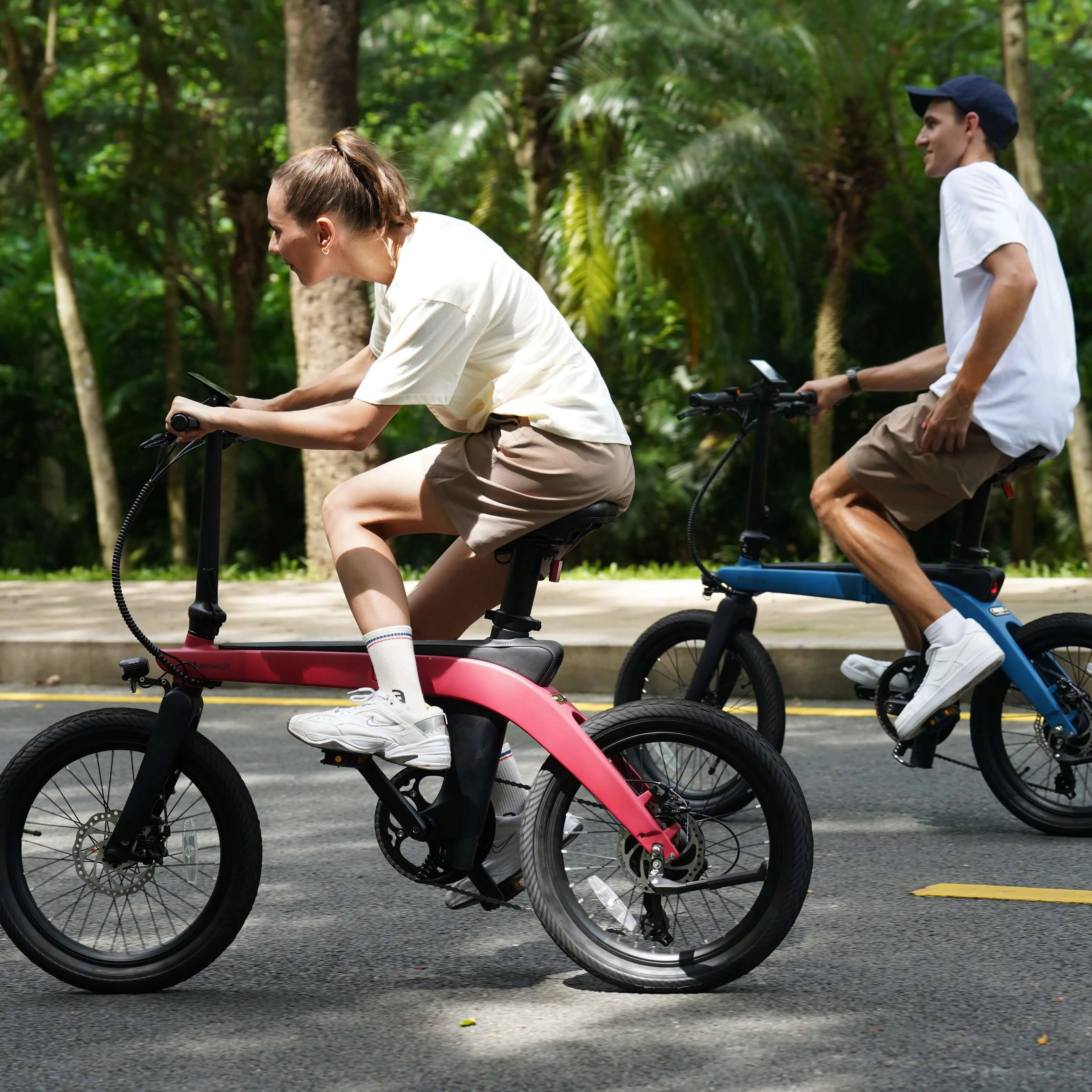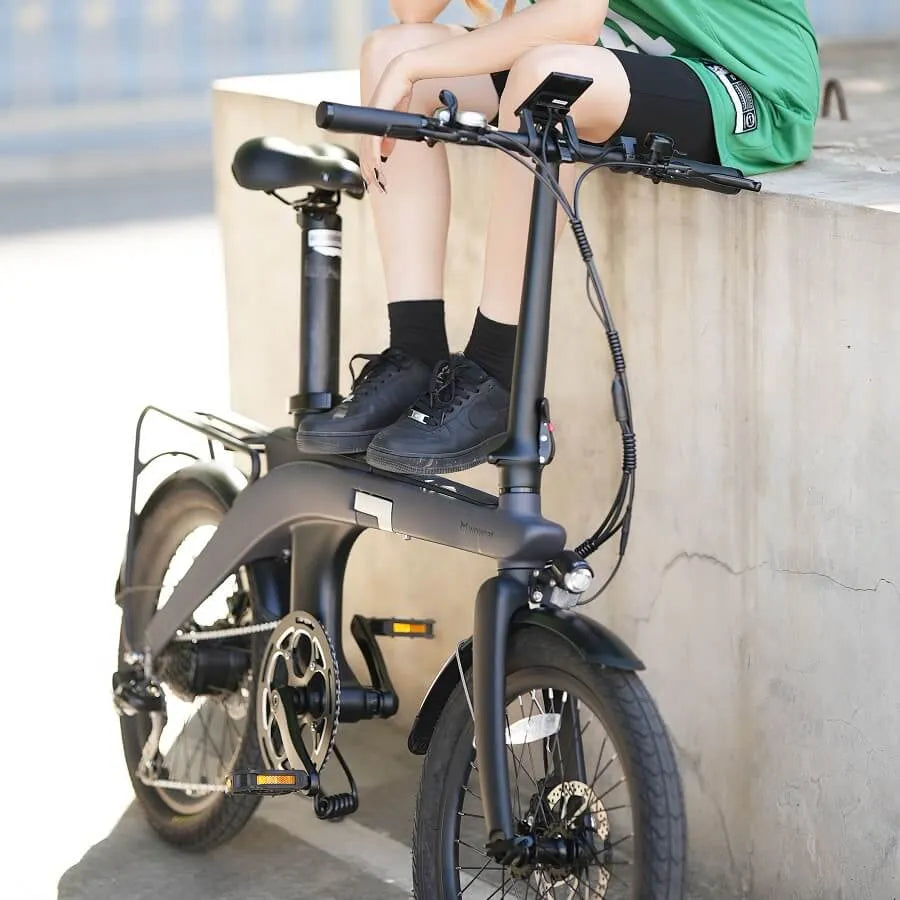As winter's chill sets in, the allure of navigating through snow-covered landscapes on an electric bike adds a unique dimension to the e-biking experience. However, as any seasoned rider knows, the cold season brings with it a set of challenges that demand careful consideration. In this guide, we explore essential cold-weather e-bike tips, covering everything from optimizing battery performance and ensuring tire traction to mastering riding techniques that make winter cycling not only feasible but exhilarating. As the mercury drops, your e-bike adventures don't have to come to a halt – armed with the right knowledge, you can embrace the cold and embark on thrilling rides. Join us as we delve into the intricacies of winter e-biking, providing insights and strategies to keep you pedaling smoothly through frosty terrains.
Battery Maintenance Tips
In the realm of electric bikes, where power is paramount, the heartbeat of your ride lies within the battery. As winter's icy embrace envelops the world, the need for meticulous battery maintenance becomes undeniable. In this segment, we'll unravel the crucial tips that ensure your e-bike's power source defies the cold, delivering a reliable and exhilarating winter riding experience.
- Storage Wisdom: Shielding Your Power Hub
Before you embark on a frosty escapade, give your e-bike a warm refuge indoors. Cold temperatures can sap the vitality from lithium-ion batteries, leading to diminished performance. Storing your e-bike in a sheltered space ensures that the battery retains its charge and is ready for action when you are.
- Pre-Ride Charging Rituals: Fueling Up for Winter
Charge your battery to its fullest before venturing into the winter wonderland. Cold weather can accelerate battery discharge, so starting with a complete charge maximizes your range. Aim for a warm battery; charging indoors or in a heated space helps maintain optimal temperature conditions for your power pack.
- On-the-Go Strategies: Keeping the Battery Warm
Once you hit the trail, safeguard your battery against the cold's relentless grip. Insulate it with a battery cover or wrap it in a thermal layer. This proactive measure helps sustain the battery's temperature, ensuring consistent performance and safeguarding against unexpected dips in power during your ride.
- Range Realities: Adjusting Expectations
Acknowledge that the cold alters the dynamics of your battery's range. As temperatures drop, your e-bike may cover fewer miles on a single charge. Plan your routes accordingly and be mindful of your battery's limitations, adjusting expectations to accommodate the winter conditions.
- Post-Ride Care: Preserving Longevity
After conquering the cold, don't neglect your e-bike's power source. Store the battery in a moderate environment, avoiding extreme temperature fluctuations. This practice, combined with periodic charging during the off-season, safeguards the battery's health and contributes to its longevity.
In the realm of cold-weather e-biking, a well-maintained battery is the linchpin that ensures a seamless and enjoyable ride. Implementing these tips not only preserves your e-bike's power but also enhances your winter cycling escapades, turning them into exhilarating journeys powered by resilience and preparedness.
Tire care
Regular tire checks are a crucial task, especially when navigating winter terrain on your e-bike. Serving as the vital connection between your bike and the road, ensuring their optimal condition is paramount for tackling potential adverse conditions. Cold temperatures can impact tire pressure, making it essential to inspect them before each ride. Conduct the check outdoors, referring to the pressure range indicated on the tire's sidewall if needed. Maintaining proper tire inflation not only safeguards against potential issues but also minimizes resistance during rides, ensuring your e-bike's motor operates at peak efficiency. It's a simple yet effective way to enhance your e-bike's range, particularly when facing challenging weather conditions.
- Pressure Precision: Adapting to Cold Constrictions
The cold has a habit of contracting air molecules, leading to decreased tire pressure. Regularly check and adjust your tire pressure to the manufacturer's recommendations. Optimal pressure not only enhances your e-bike's efficiency but also ensures proper contact with the road, crucial for stability in icy conditions.
- Tire Tread Tidings: The Grip Game
Tread patterns matter, especially when facing slick surfaces. Consider investing in winter-specific tires designed for enhanced traction in snowy and wet conditions. These tires often feature deeper grooves and unique tread patterns that bite into the snow, providing a more secure grip and reducing the risk of slipping.
- Pre-Ride Inspections: A Visual Check for Safety
Before embarking on a winter expedition, conduct a thorough inspection of your tires. Look for any signs of wear, embedded debris, or damage. Ensure that the tread is sufficient for the challenges ahead, and promptly address any issues to guarantee optimal performance and safety during your ride.
- Tire Types for Winter Triumphs: Choose Wisely
Different terrains demand different tires. If your winter rides involve a mix of snow, ice, and wet surfaces, consider studded tires for superior grip. Studded tires feature metal spikes that bite into icy surfaces, providing an extra layer of control and stability, especially in more challenging conditions.
- Post-Ride TLC: Protecting and Preserving
After conquering frosty trails, show your tires some post-ride love. Clean off any accumulated salt or debris, as these can accelerate tire wear. Inspect for punctures or damage, and if you've been riding on studded tires, check for any missing studs and replace them promptly to maintain peak performance.
Plan Ahead for Riding
Embarking on an e-biking journey in the winter demands thoughtful planning to ensure a smooth and enjoyable experience. The cold weather introduces unique challenges, but with strategic preparation, you can navigate the frosty landscapes with confidence. Here's a comprehensive guide on how to plan ahead for your winter e-biking escapades:
- Check the Weather Forecast
Stay ahead of changing weather patterns by regularly checking the forecast for your intended riding days. Be mindful of temperature fluctuations, precipitation, and wind conditions. This information will help you choose appropriate clothing, plan your route accordingly, and anticipate any challenges posed by the weather.
- Inspect Your E-bike Thoroughly
Before venturing into the winter wonderland, conduct a comprehensive inspection of your e-bike. Check for any signs of wear and tear, ensure all components are properly lubricated, and confirm that the tires are in optimal condition. This proactive approach reduces the risk of mechanical issues during your ride.
- Charge Your Battery Fully
Cold temperatures can impact battery performance, so start your ride with a fully charged battery. Charge the battery indoors or in a heated space to ensure it's at an ideal temperature for maximum efficiency. Carry an extra battery if possible, especially for longer rides, to avoid any unexpected power shortages.
- Dress in Layers
Winter temperatures can be unpredictable, so dressing in layers allows you to adjust to changing conditions. Wear moisture-wicking base layers to stay dry, insulating layers for warmth, and a windproof and waterproof outer layer to protect against the elements. Don't forget gloves, a hat, and thermal socks to keep extremities warm.
- Choose Appropriate Routes
Opt for well-maintained routes with minimal ice and snow accumulation. Familiarize yourself with the terrain and potential hazards along the way. Consider avoiding busy roads and opting for bike paths or trails where possible, enhancing both safety and the overall riding experience.
- Inform Someone of Your Plans
Share your planned route and estimated return time with a friend, family member, or roommate. In case of any unforeseen circumstances, having someone aware of your whereabouts enhances safety and ensures timely assistance if needed.
- Pack Essential Gear
Carry a toolkit, spare parts, and a first aid kit to address any minor issues that may arise during your ride. Additionally, pack snacks, water, and a thermos of hot beverage to stay nourished and hydrated. A cellphone with a fully charged battery is crucial for emergencies.
- Master Cold-Weather Riding Techniques
Practice smooth acceleration and braking to maintain control on potentially slippery surfaces. Be aware of the reduced traction in cold conditions and adjust your riding style accordingly. Familiarize yourself with braking distances and turning dynamics in winter weather.
- Be Flexible with Plans
Winter conditions can change rapidly, so be flexible with your plans. Be prepared to alter your route or cut your ride short if weather conditions worsen. Safety should always be the top priority.
- Post-Ride Maintenance
After your winter ride, conduct a thorough post-ride maintenance routine. Clean and dry your e-bike, lubricate moving parts, and store it in a sheltered space. Charge the battery if needed, ensuring it's ready for your next cold-weather adventure.
By implementing these planning strategies, you equip yourself with the tools and knowledge needed to conquer winter conditions on your e-bike. With careful preparation, each ride becomes an opportunity to embrace the beauty of the season while enjoying the thrill of winter cycling.











